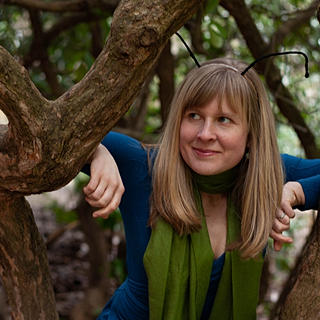Outing #10: The Glow-in-the-Dark Sea
- Kyrie Kellett
- Mar 27, 2020
- 3 min read
Puerto Mosquito (Mosquito Bay), Vieques, Puerto Rico

EXPLORE
Our last stop on our “week of land and water” was pretty special. We traveling to a bioluminescent bay on the island of Vieques, Puerto Rico. That means that the water GLOWS when you disturb it! The light comes from a type of plankton called a dinoflagellate (Pyrodinium bahamense to be precise.) This plankton is just one of the many aquatic animals that produce, reflect, or absorb then release light to survive.
Start your trip by finding Puerto Mosquito on the map.
Then, watch this beautiful video photographing the bioluminescent plankton in the water.
National Geographic also has a great video explaining how and why animals release light.
Want to know the details of how bioluminescence works? Check out this infographic explaining how the dinoflagellates create light.

And, here is an actual photo of the tiny plankton responsible for Puerto Mosquito’s light show, Pyrodinium bahamense, taken with an electron microscope.
DISCUSS
What are the different ways that animals use light to survive?
Have you ever seen an animal that glows?
Which animals would be most interesting for you to see in person?
DO
Make your own glowing Pyrodinium bahamense! This activity took some patience, but it was a huge hit with the Adventure Whales. In fact, several kids took their computers with them to show us their luminescent plankton in a dark closet, soon to be joined by a party of of glowing OMG Dolls and giggling seven-year-olds.
Instructions
1. Collect materials:
6 basket style coffee filters (if you don’t have any, you can use muffin papers or plain paper cut in circles about 3-4” across)
Stapler with lots of staples
Tissue paper (crumpled coffee filters or toilet paper work too)
Glow stick(s) or small electric lights
2. Fold the coffee filter in half with the frills opening out. Place three staples along the straight edge about ½ inch from the fold. Repeat this for the other five coffee filters.
3. Open all of the filters again so that the stapled section looks like a ridge sticking up from the bottom of the cup of the filter.
4. Align two filters so that the ridges face out but are aligned. Staple one side together where the ridges meet.
5. Repeat this two more times to make a string of four coffee filters with one long ridge running down the middle.
6. Create a ring out of the stapled filters and attach the ends with the stapled seams facing out and the ridges aligned.
7. Put a fifth filters on the top of the ring and staple it to the edges of the four filters in the ring.
8. Stuff with tissue paper. Put the light(s) or glow sticks inside the tissue. If using glow sticks, crack them so they start glowing. Explain how the chemicals mixing in the glow stick is similar to the chemicals reacting in the plankton to produce light.
9. Staple the last filter to the open side to create a closed shape.
You now have a bioluminescent dinoflagellate lantern! Find a dark place to check it out.
I created this DIY paper plankton activity, but it is inspired by a totally amazing Instructables project that explains how to crochet and wire your own bioluminescent dinoflagellate.
Want to make more glow-in-the-dark sea animals? Check out this crafty anglerfish activity from the American Museum of Natural History.
SHARE
Post photos of your bioluminescent plankton or other glowing creatures in the comments below, via Facebook, or by email!
Photo Credit: CSIRO, CC BY 3.0, https://commons.wikimedia.org/w/index.php?curid=35488006














































Comments